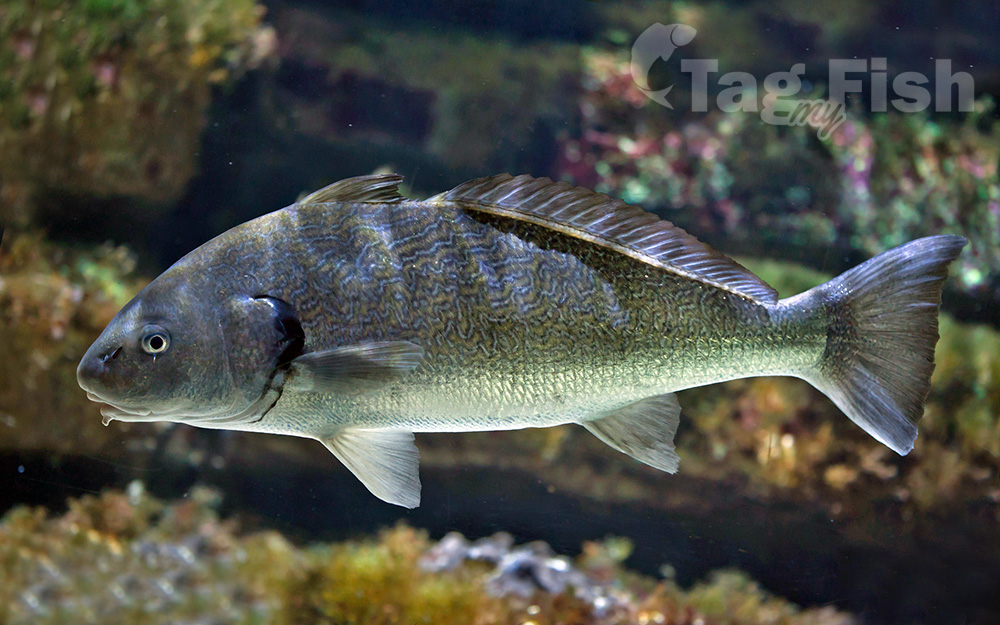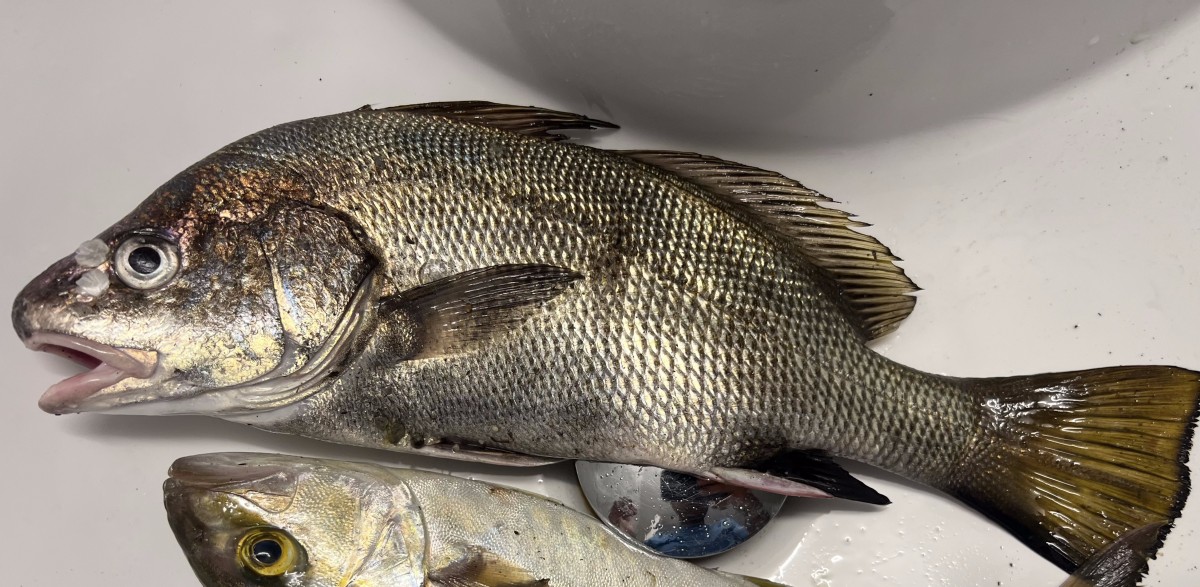Shi drum
(Umbrina cirrosa)

Classification
General data
Umbrina cirrosa, the shi drum, is a species of marine fish from the warmer waters of the eastern Atlantic Ocean, Mediterranean Sea and the Black Sea. It is a commercially important species which is trawled for and farmed in aquaculture, as well as being a species pursued by anglers and spear fishermen for sport. The alternative vernacular names are gurbell, sea crow, bearded umbrine and corb.
Description
Umbrina cirrosa has a moderately elongated body which is deep and laterally compressed. Its small mouth has an inferior setting and contains villiform teeth while on its chin there is a short and rigid barbel which is perforated by a pore at its tip. Its scales are mainly ctenoid in form except for those on the breast, snout and sub-orbital region, where they are predominantly cycloid. It is greyish-silver to brownish in colour, with a metallic sheen and is marked with longitudinal dark lines on the dorsal regions; the membranes on hind margin of gill cover are jet black in colour while the fins are dusky.
The maximum length recorded is 73 cm total length, although the average is 40 cm. It can be up to 10 kg.
Distribution
Umbrina cirrosa is found in the eastern Atlantic Ocean from the Bay of Biscay to southern Morocco and in the Mediterranean, although it is not found around the larger islands, and Black Sea and Sea of Azov. It has also spread into the Gulf of Suez through the Suez Canal, one of the few Lessepsian migrants to go from the Mediterranean to the Red Sea, known as anti-Lessepsian migrants.













